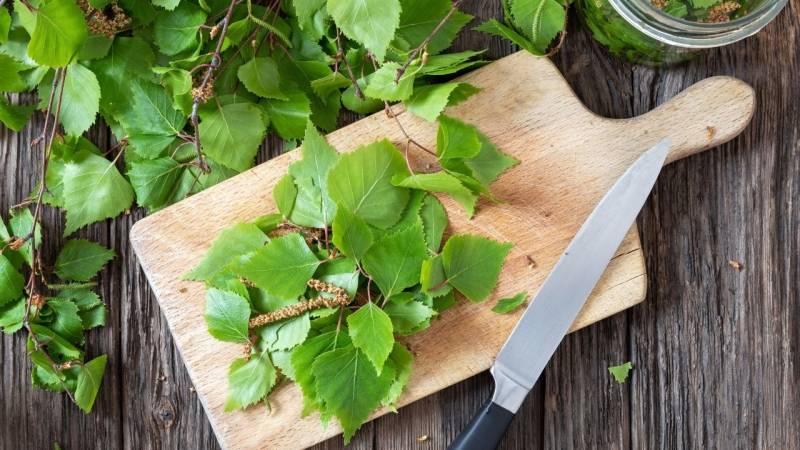
Can you eat tree leaves? – 9 types that are edible
👉 The key facts from this guide
- The leaves of many trees are edible, especially in spring when young leaves sprout.
- Edible tree leaves include those of birch, lime, maple, beech, pine, Douglas fir, willow, and hazelnut.
- Leaves contain vitamins and minerals, but little energy for humans, as we cannot digest cellulose.
- Some tree species are poisonous or deadly, such as European yew, Pacific yew, horse chestnut, and manchineel.
- To determine if a leaf is edible, perform an edibility test that includes smell, skin contact, and taste test.
- Leaves are not staple food for humans, but can be used in emergencies or as a supplement.
To know whether you can eat tree leaves and which types are edible is great knowledge in the wilderness.
When I am outdoors, I often wonder whether a particular tree has leaves that can be eaten by humans.
I think to myself, if the leaves are edible in our salads, then are the leaves of the trees also edible?
So, I researched and got to the bottom of the issue with the leaves.
Can I eat tree leaves?
The leaves of many trees are edible. The best leaves are in the spring, when the young leaves sprout. Although you can eat tree leaves, they do not contain much energy that we humans can derive from them. We cannot break down the cellulose and sugar contained in the leaves.
Tree leaves are abundant worldwide. People tend to consider tree leaves as food for animals, but not as a food source for ourselves.
However, there are many tree leaves that we can safely incorporate into our diet.
Now I will show you the most delicious edible tree leaves. Let's get started.
Edible tree leaves
Most of us would search for food on the ground in the forest.
Only a few of us would probably consider looking up to the trees for a food source.
Nevertheless, it is sometimes known that tree leaves and even bark are suitable and safe for human consumption.
The Birch Tree
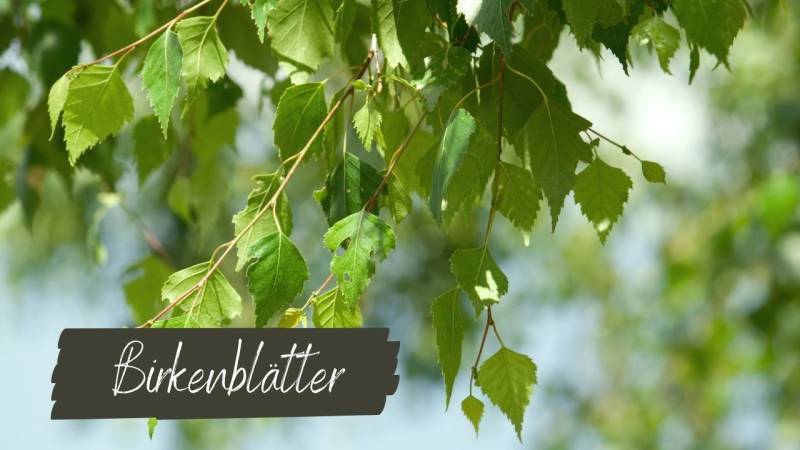
Oh, how I love the birch tree. It is so versatile, which is why I have already written about its bark.
Birch trees are deciduous trees with thin leaves and a white bark. The inner bark of the birch can also be eaten or processed into a kind of "substitute flour."
But the bark is also edible raw or as an ingredient in soups, when prepared like thin noodles.
The spring leaves of the birch tree are also edible. And they are frequently used as an ingredient in teas thanks to their properties, which are diuretic and can help with skin problems, urinary tract problems, and colds.
The Linden Tree
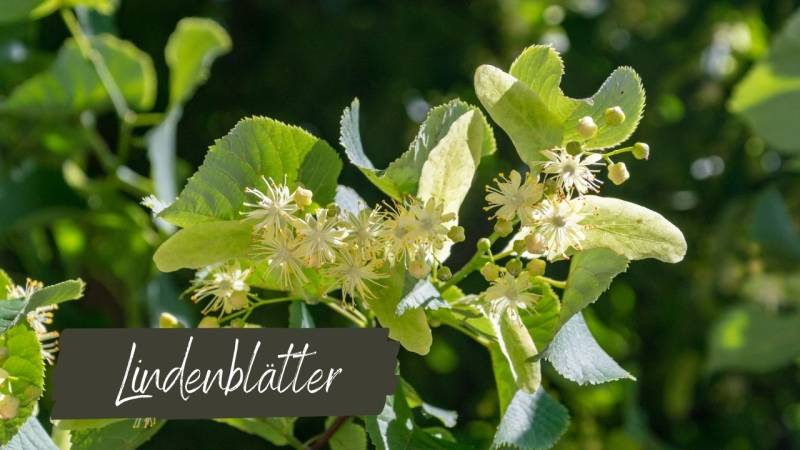
The leaves of the linden tree are among the most popular edible leaves. The linden tree is characterized by its gray, rugged bark.
You can eat young spring leaves from the linden tree raw or lightly cooked. Its flowers are also a well-known ingredient in teas and are delicious raw.
The Maple Tree
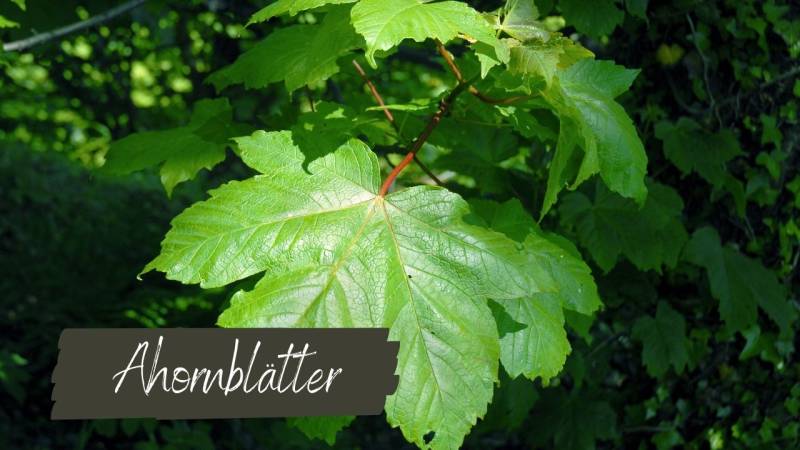
The maple tree has distinctive, three-lobed leaves that are slightly serrated.
While these trees are primarily known for their delicious syrup (in North America), their young leaves and seeds are also edible.
The Beech Tree
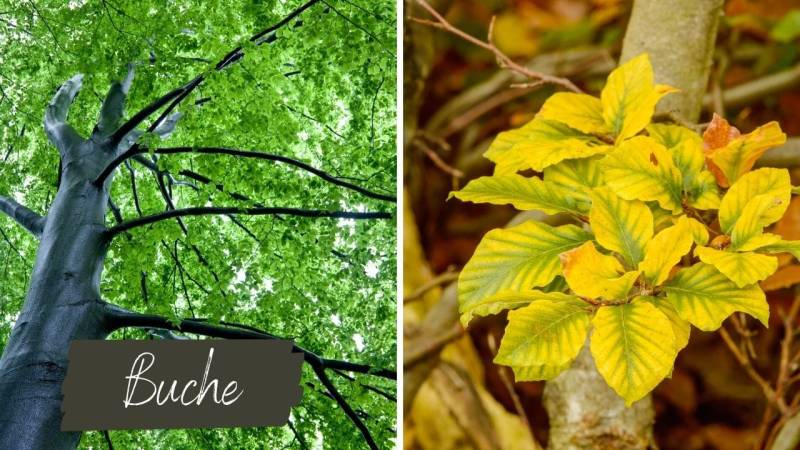
Be a book to 30 meters tall. They stand out for their gray-colored bark and deep green leaves.
The young spring leaves can be eaten raw or cooked. Remember that the nuts - the beech nuts - are also edible.
Also read
Beech nuts: crunchy snack from the native forest - how to collect and process? - The fruits of beech, beech nuts, are edible for us humans. Find out here how to collect them and what to cook from them. [with beech nut recipes]
The Pine
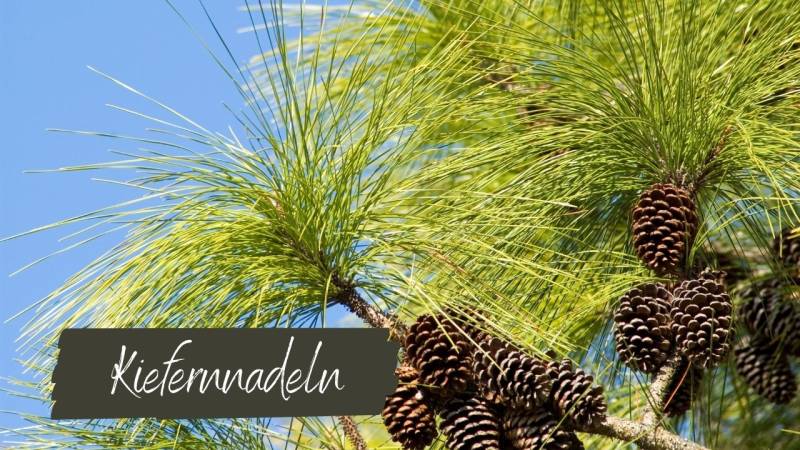
Conifers are vital for wildlife and have many uses for human survival.
While the bark is a source of food for animals, pine needles are edible for humans.
They are rich in vitamin C and taste fresh of the forest. Usually, you chew the needles, remove the juice, and spit out the pine needles instead of eating the whole thing.
You can also make tea from the needles to extract the nutrients.
The Douglas fir
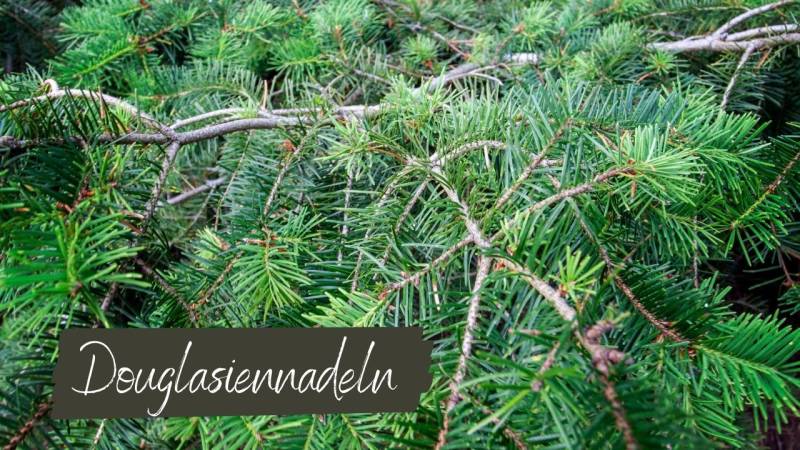
The Douglas fir is an extremely delicious tree. If you've never tried the needles before, now is the time.
Especially in spring, the tips of the Douglas fir are soft and completely edible. The taste of fresh lemon will mobilize your strength again.
I also love the needles of the Douglas fir in tea. Definitely give it a try.
The Willow
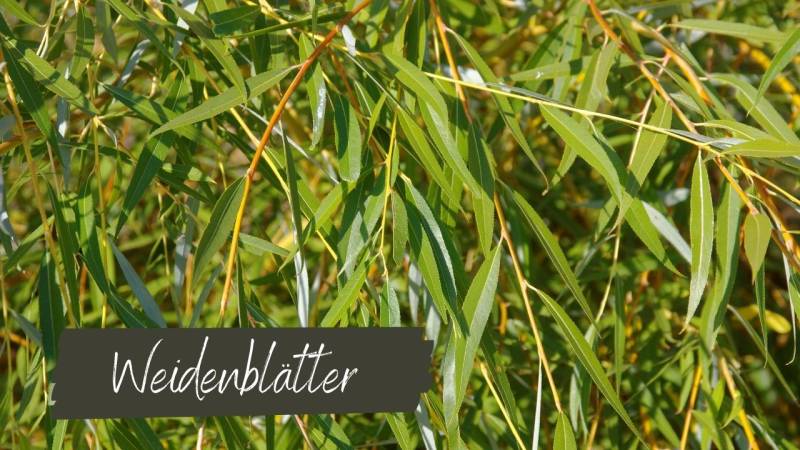
Although bitterness is a warning sign not to eat a leaf, the leaves of the willow tree are an exception.
Young willow leaves can be eaten without negative consequences in desperate situations
However, it should be noted that willow leaves and bark contain salicin - which is why willow tastes bitter as well.
Salicin has the same effect as aspirin in the human body, making it a natural pain reliever. It helps with headaches, fever, and works against back pain and rheumatic complaints.
Salicin is derived from the Latin word Salix for willow. Pregnant women and children should consult their doctor before consuming willow.
The Hazelnut
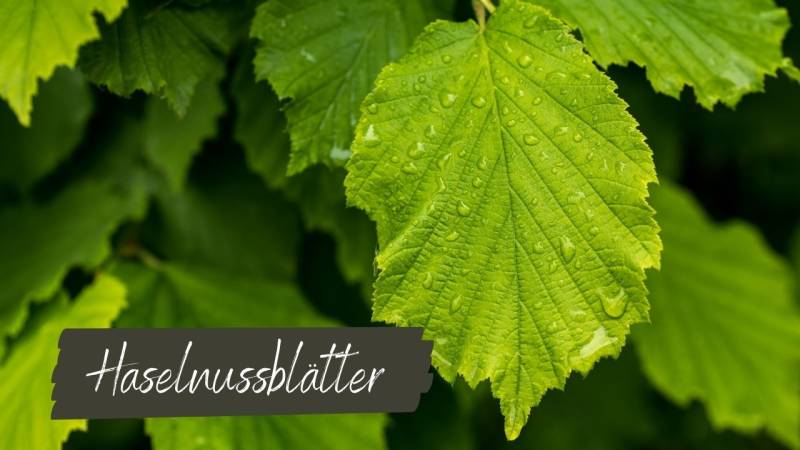
Hazelnut leaves are also edible and slightly milder than grape leaves. You can use them in the kitchen the same way.
The round to heart-shaped hazelnut leaves contain valuable ingredients such as tannins, the bark is used for tanning animal hides, phenols, and silicic acid.
Therefore, you can also wonderfully use hazelnut leaves as tea.
The Sassafras tree
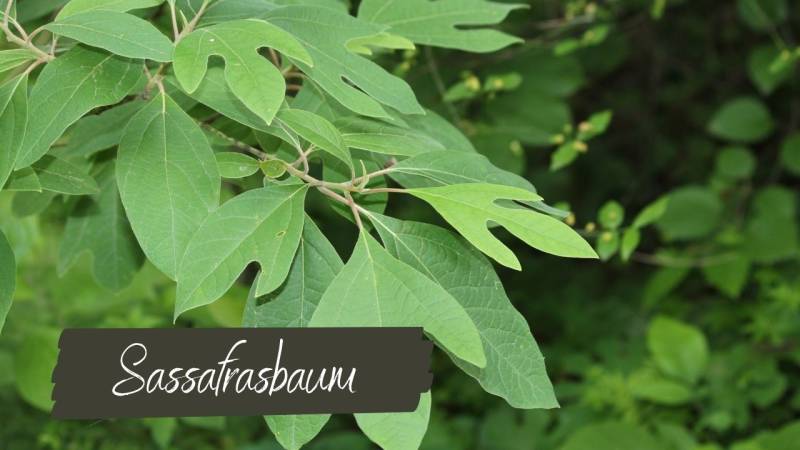
Tea from the sassafras tree is well-known and has a distinctive, fragrant taste. The leaves are delicious.
Unlike other types, the leaves of the sassafras tree do not need to be cooked and are ideal for salads.
However, the sassafras tree only occurs in North America.
Avoiding deadly trees
Trees, like most things in nature, have a defense mechanism that helps them to survive.
As a result, many tree species are poisonous, even deadly to humans. Here are just a few that you should avoid.
The European Yew
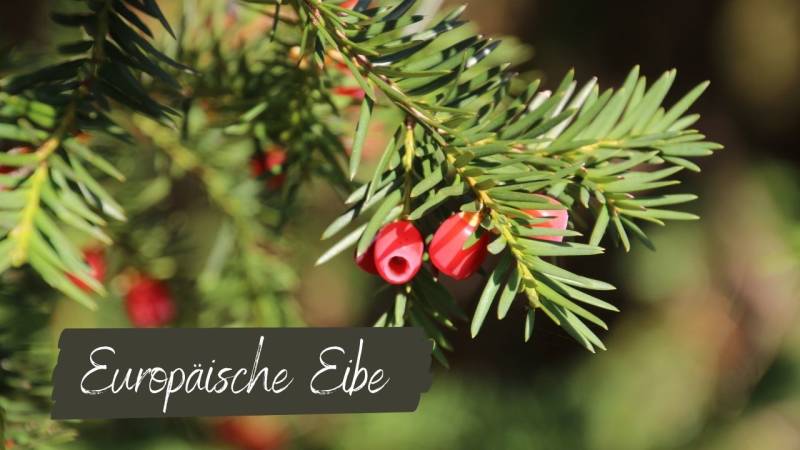
The yew tree is only rarely found in Germany today, as it was heavily felled for its fine wood.
However, it is a common sight in my local park in Berlin and is often used as an ornamental tree.
The bark, leaves, seeds, and everything else are toxic - except for the flesh of the red seed casings.
The yew's toxins, called taxin, fatally affect heart function, and there is no antidote.
The Pacific Yew
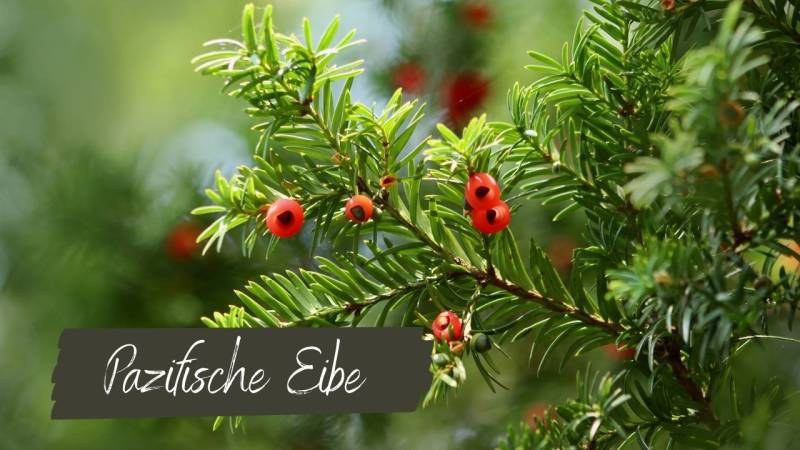
These trees, which can grow up to 15 meters tall, are native to the Pacific Northwest.
The evergreen tree has a scaly bark that is purple to reddish. The bark of the branches starts out green and later turns red-brown.
The Pacific Yew is characterized by its thin, scaly bark, delicate leaves, red seed casings and cones.
These leaves contain an alkaloid toxin that impacts heart function.
But the Pacific Yew is not just a poisonous tree; it also has healing properties. For example, the substance Paclitaxel helps in the treatment of various cancers, such as breast and ovarian cancer.
The Common Horse Chestnut
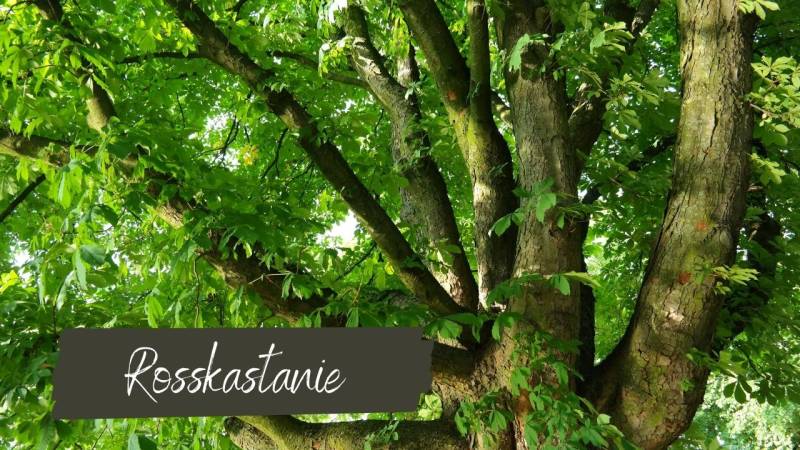
This is a common tree in Europe, the Balkans, and the Pacific Northwest, cultivated for its flowers.
The leaves of the horse chestnut contain saponins and can be dangerous if you eat the green seed casings or seeds raw (especially for children).
However, if the mucous membrane of the gastrointestinal tract is intact, the toxins are hardly absorbed. Nevertheless: hands off. One chestnut is already a critical dose.
Manchineel tree
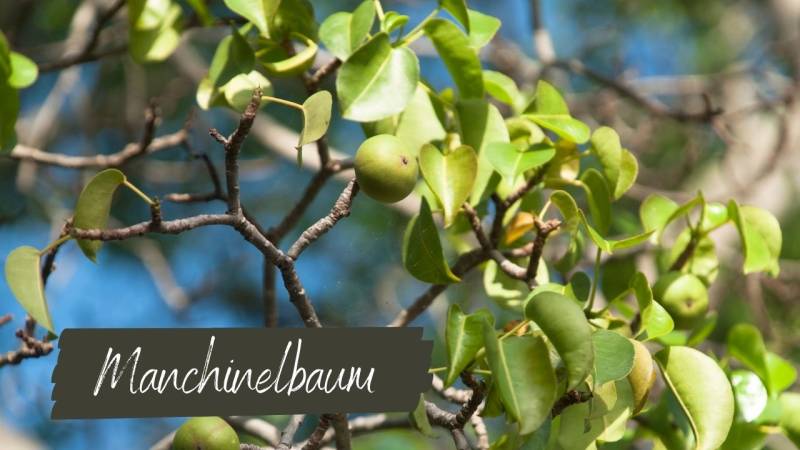
The manchineel tree, also known as the beach apple, is widely known as one of the most toxic trees in the world. It grows in Florida, the Bahamas, the Caribbean, Central America, and parts of South America.
In Spanish, the tree is also called "Manzanilla de la muerte," which translates to "little apple of death."
While the fruit is often considered poisonous, this also applies to all other parts of the tree. Eating any part of this tree usually leads to a painful death, including the leaves.
Attention: If you stand under the tree in the rain, a milky sap from the leaves can burn your skin and cause blindness.
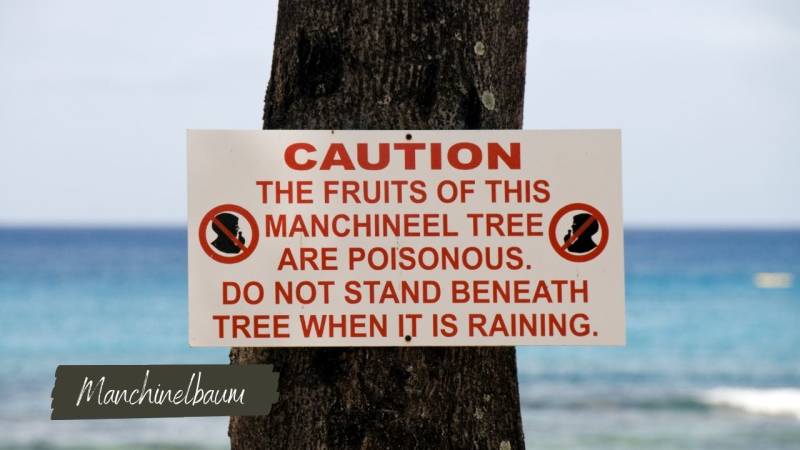
Attention: If you suspect poisoning in yourself or someone else, immediately contact the poison control center. Call them and describe the situation in detail to the advisors on the phone.
How to test if a leaf is edible
Survivalists developed a test a long time ago to determine if a plant is edible.
However, always remember the first and most important survival rule in an emergency situation: never take a risk.
In the test, the plant is broken down into its components (roots, stems, leaves, buds, and flowers) and each component is tested.
The same method can be applied to testing tree leaves. Here are the key steps you should take:
- Smell it
- Strong, unpleasant smells are a bad sign. Stay away from it.
- Test for skin contact
- Take the leaf and place it on your wrist, forearm, or elbow for a few minutes. If your skin reacts to the leaf, whether it's rash, itching, swelling, burning or numbness, you should avoid the tree immediately.
- Prepare a small amount for eating
- If the leaf smells good and skin contact is negative, take a small amount of it. Cooking is recommended for most leaves.
- Lip test
- After preparing the leaf by cooking, place it on your lips. Wait for 10 to 15 minutes and observe any reactions. Does it burn, tingle, or swell your lip? If there is no reaction, continue.
- Small taste test
- Put a small amount of the leaf in your mouth and chew it. Don't swallow it! Keep it in your mouth for 15 minutes and wait for any reactions from your body. If the leaf tastes bitter or soapy, spit it out. Watch your body again for any reaction to toxic substances.
- Swallow test
- If you haven't noticed anything unusual while chewing, swallow the small bite. Wait several hours to determine if your body has reacted to the leaf. Watch for difficulty swallowing, fever, chills, vomiting, or nausea. If your body does not react negatively, you can conclude that the leaf is safe to eat.
Problems that arise when people eat tree leaves
At first glance, the main problem with regularly consuming leaves may seem to be the potential toxicity they contain.
However, the real issue is the lack of energy that leaves provide for human beings.
As humans developed, our brain size increased, and we now require a lot of energy from our food to fuel our bodies.
Although leaves are rich in cellulose, a type of sugar, humans do not possess the necessary enzymes or bacteria to break it down.

Humanity evolved to extract carbohydrates and fats from higher energy sources, such as meat.
As a result, we do not have the enzymes or bacteria, as cows do, for example, to digest most leaves and grasses.
Therefore, leaves have limited value in our diet.
Even ground leaves, such as lettuce, provide very little energy for us.
If we could properly digest the cellulose in leaves, we would have to eat huge amounts to efficiently fuel the human body. Only animals, such as cows who graze all day, can manage this.
But nonetheless, leaves can be beneficial, containing some useful vitamins and minerals.
Vitamin A and C are often found in leafy vegetables, so it is safe to assume that you also get calcium, potassium, and sodium from tree leaves.
However, because it lacks many components essential for human survival, leaves are not a nutritional basis for us.
Read also: Can humans eat grass and if not, why? (+alternatives)
Final thoughts on edible leaves
The leaves of many trees are edible.
Generally, leaves should only be eaten in the spring when the young leaves are sprouting.
Some species of leaves can be eaten raw, while others must be cooked before they can be safely consumed.
If you are in a survival situation, weigh the risks carefully. To ensure that you are not eating anything dangerous, conduct a strict edibility test.
Although tree leaves are edible, they do not contain much energy that we can extract as humans.
Unfortunately, we cannot access the sugar (cellulose) in the leaves.

Sources for the guide
https://gizbonn.de/giftzentrale-bonn/pflanzen/rosskastanie

Author of the guide
Martin Gebhardt
Hey, I'm Martin. On my blog, you will learn the basics and numerous details about living in the wild. I think survival, bushcraft and the good life in nature are the keys to happiness. Find me here on Instagram or on YouTube. You can find more about my mission on the About Me page.
Was this guide helpful?
79 people found this guide helpful.
4.95 out of 5 points (80 Ratings)
Comments (0)
This post may contain affiliate links. So if you click on the links and make a purchase, I will receive a small commission at no additional cost to you. Click here, to learn more about it.


